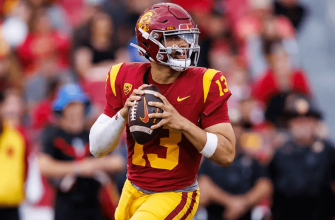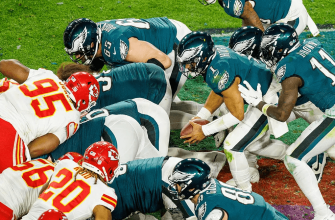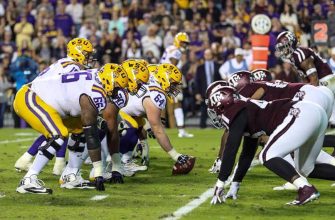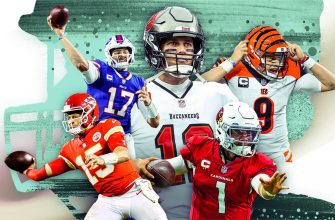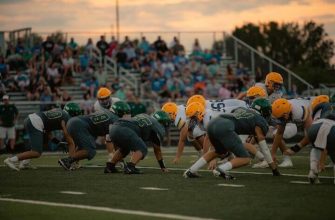Understanding the proper way to hold a football is key to achieving consistency in your spiral and accuracy in throws. This makes choosing the right football crucial, as it significantly affects your grip, especially for younger players aiming to learn the best way to hold a football.
The article will guide readers through the essentials of how to hold a football, detailing methods such as how to hold a football while running and how to hold a football to throw. It also touches on common mistakes to avoid and advanced tips for perfecting your grip, ensuring players at all levels can find valuable insights.
The Proper Way to Hold a Football While Running
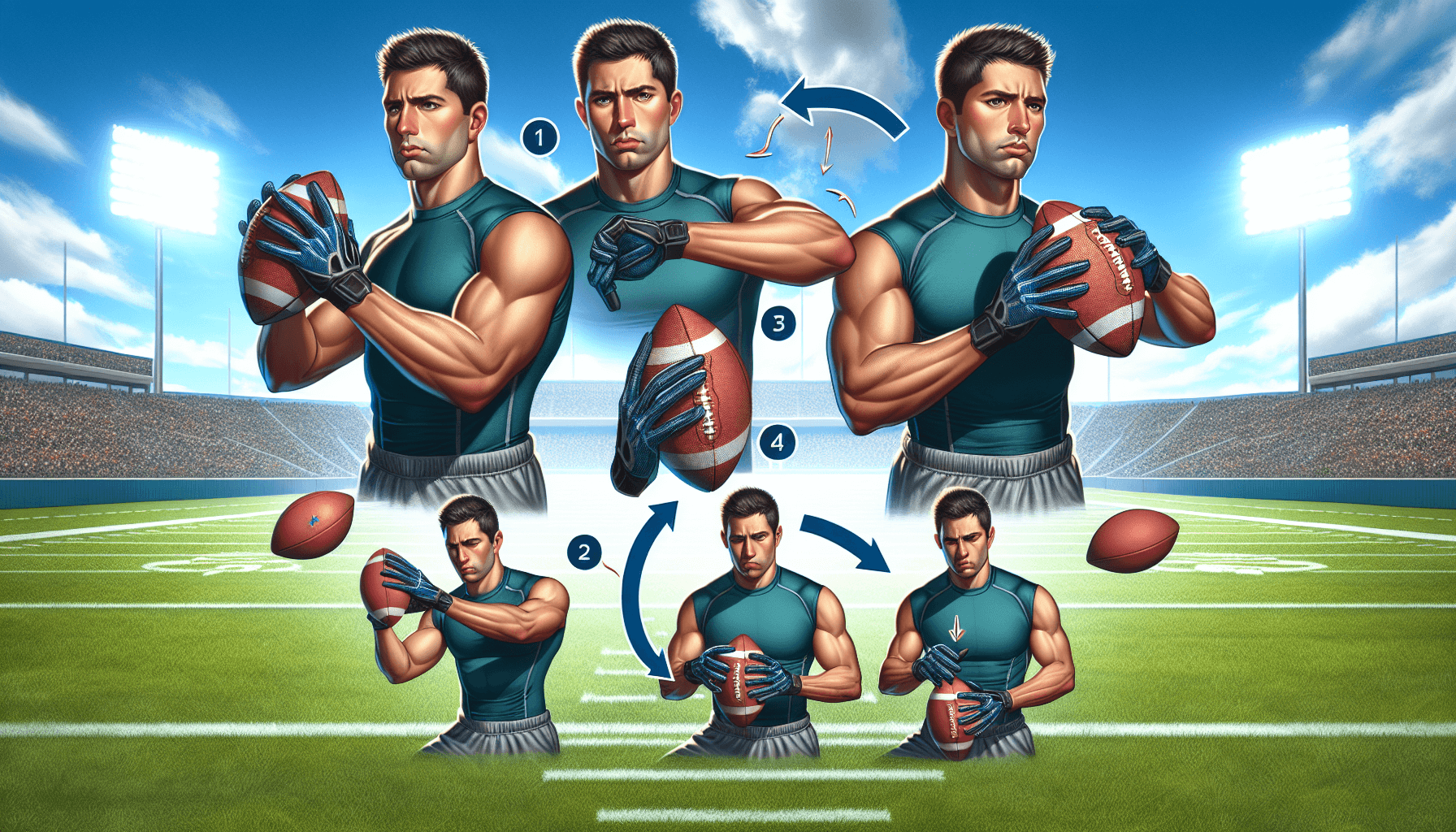
Gripping and Protecting the Football
- Initial Grip: Start by placing the point of the football in your palm, ensuring your fingers are on the point to secure a firm grip.
- Positioning the Football: Press the football against your body to create a secure trap between the body and the arm, reducing the chances of it being knocked out.
- Securing the Football: In situations with heavy traffic, wrap both forearms and hands around the football, effectively creating a protective blanket around it.
Optimizing Football Position for Running
- Body Alignment: Ensure the outside panel of the football presses against the forearm, and the inside panel against the ribs, resting slightly forward on the abdomen for stability.
- Arm Configuration: Keep the elbow close to the body to enhance control and curve the wrist so the side of the ball rests against it, forming a protective ‘pocket’ with the forearm, wrist, and shoulder.
- Additional Security: Place the ‘Off-Hand’ on top of the football, squeeze it firmly, and always carry the ball on the side to facilitate natural running form.
Advanced Holding Techniques
- Five Points of Pressure: Practice maintaining contact at the fingertips, palms/wrists, forearms, biceps, and chest to reduce fumbling chances.
- Dynamic Movement: When changing direction, especially dropping down low, squeeze the football to ensure it remains secure.
- High and Tight: Keep the ball high and tight across the body, using the elbow to secure it further, and split the tip of the football with your index and middle fingers for a better grip.
Mastering the Football Grip for Throwing
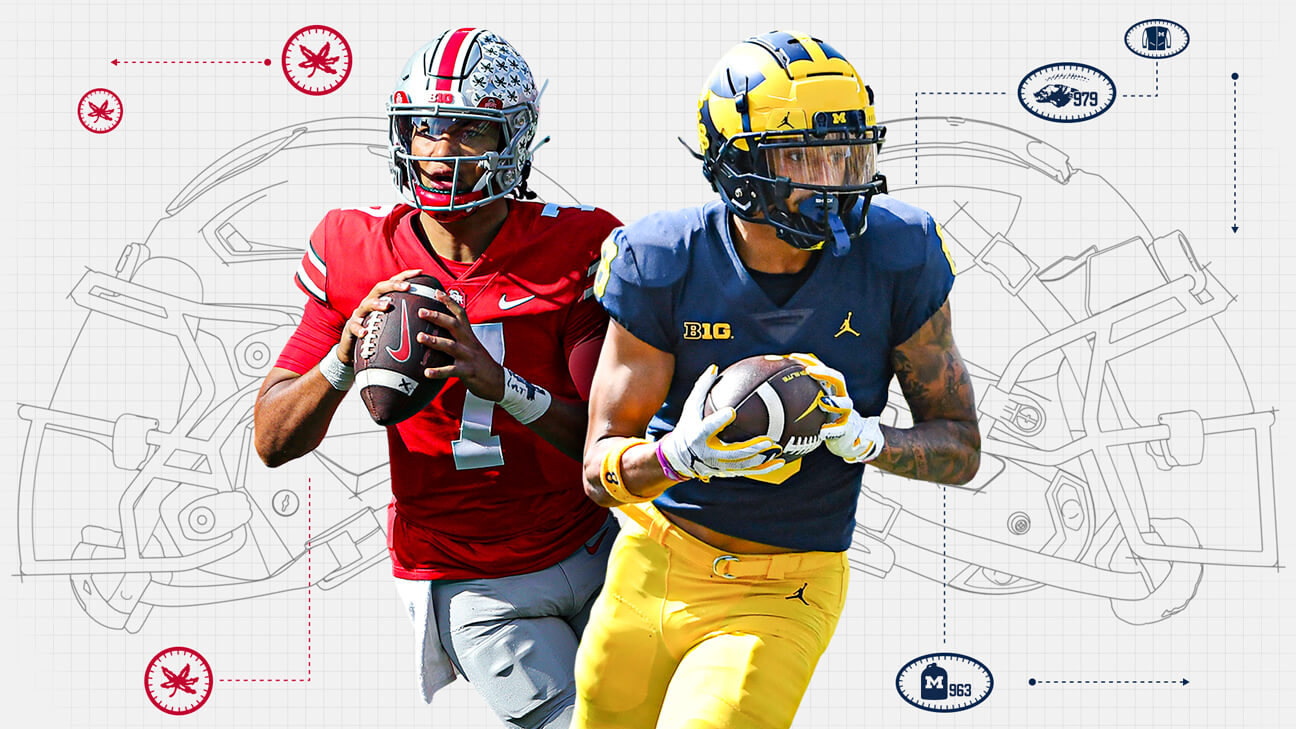
Establishing the Basic Grip
- Finger Placement: Begin by positioning the ring finger’s first knuckle over the second lace on the football’s backside. Place the index finger’s first knuckle over the stitch line, ensuring the middle finger rests flat on the football.
- Thumb and Pinky Configuration: Slot the pinky underneath the lace while positioning the thumb with a slight gap to keep the nose of the football up. This setup helps maintain the ball’s position during the throwing motion.
Advanced Finger Techniques
- Index and Thumb Placement: Ensure the thumb is directly under the index finger, which should be just over the stitch line for optimal control. The placement of these fingers is crucial for accuracy and spiral quality during the throw.
- Number of Fingers on Laces: It’s common to place two fingers on the laces, but some quarterbacks prefer three for better control. Adjust according to comfort and control needs.
Grip Dynamics During the Throw
- Hand Position and Release: As you prepare to throw, ensure the football is held high, approximately at shoulder level. During the release, the pinky and thumb should come off first, leaving the index and middle fingers last in contact with the football, aiding in precise direction and spin.
- Wrist and Elbow Alignment: Maintain a high elbow position throughout the throw to ensure a stable and accurate pass. The wrist should stay neutral to prevent undue stress on the arm.
Refining the Grip for Enhanced Performance
- Pressure and Finger Spread: Do not grip the football too tightly as it can hinder the throw’s fluidity. Spread the fingers adequately to balance control and flexibility.
- Following Through: The motion should end with the thumb pronating downwards towards the opposite thigh, which helps in achieving a tight spiral and accurate trajectory.
Troubleshooting Common Grip Issues
- Adjusting Finger Width: If experiencing control issues, widening the fingers, especially the index finger, can enhance spiral height and consistency.
- Evaluating the Grip: Regularly assess the grip’s effectiveness by checking the ball’s flight and making necessary adjustments to finger positions and pressure levels.
By mastering these techniques and regularly practicing, players can significantly improve their throwing accuracy and consistency.
Common Mistakes and How to Avoid Them
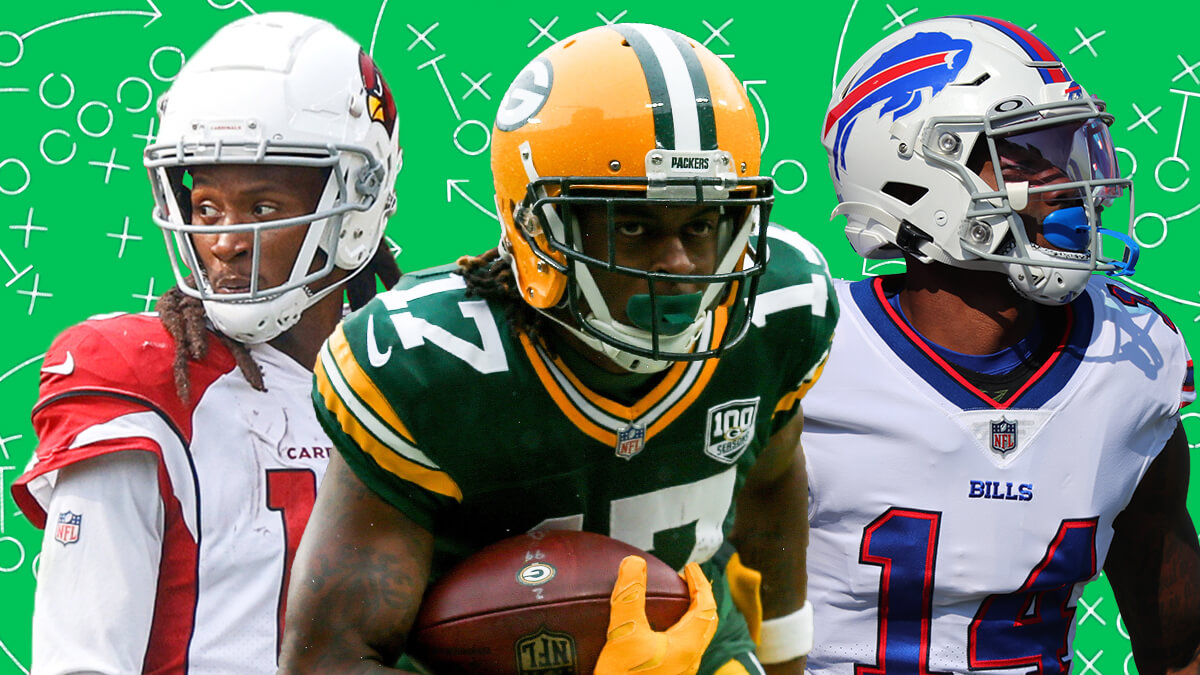
Rearing Back Unnecessarily
- Issue: Quarterbacks, both young and experienced, often make the mistake of rearing back excessively while preparing to throw, which causes the shoulders to pitch up and the ball to sail.
- Solution: Focus on maintaining a balanced stance and use the core muscles to generate throwing power instead of relying on excessive backward motion.
Stepping on the Toes
- Issue: Stepping directly on the toes rather than heel-to-toe can cause the landing to lock out, leading to a sinking ball.
- Solution: Practice stepping heel-to-toe to ensure a smooth transition and maintain control over the throw.
Incorrect Shoulder and Elbow Positioning
- Issue: Incorrect positioning of the shoulder and elbow can cause the football to sail, a common error among younger quarterbacks.
- Solution: Work on aligning the elbow below the shoulder in a ‘seated’ position to stabilize the throw.
Holding the Ball Too High or Too Tightly
- Issue: Holding the football too high can cause it to slip out during the throw. Conversely, gripping it too tightly can hinder the smoothness of the release.
- Solution: Find a comfortable middle ground where the ball is held securely but not too tightly, allowing for a fluid motion.
Overextending the Step
- Issue: Taking excessively large steps can disrupt balance and control, causing the ball to end up in the dirt or pitched upward.
- Solution: Focus on taking controlled, moderate steps that complement the natural throwing motion.
Poor Follow-Through Techniques
- Issue: Inadequate follow-through can result in awkward ball spin and timing issues, affecting accuracy and timing with receivers.
- Solution: Ensure a complete follow-through with the throwing hand moving towards the opposite hip to promote better spin and directional control.
Incorrect Follow-Through for Former Baseball Players
- Issue: Quarterbacks with a baseball background may follow through as if throwing a baseball, which affects the football’s trajectory.
- Solution: Adjust the follow-through by focusing on football-specific movements, emphasizing a downward thumb rotation at the end of the throw.
Holding the Ball Too Low in the Pocket
- Issue: Keeping the football too low in the pocket can delay the throw and increase the risk of the ball being stripped by defenders.
- Solution: Practice holding the ball at mid-chest level to enhance quick release and reduce the chance of turnovers.
Advanced Tips for Perfecting Your Grip
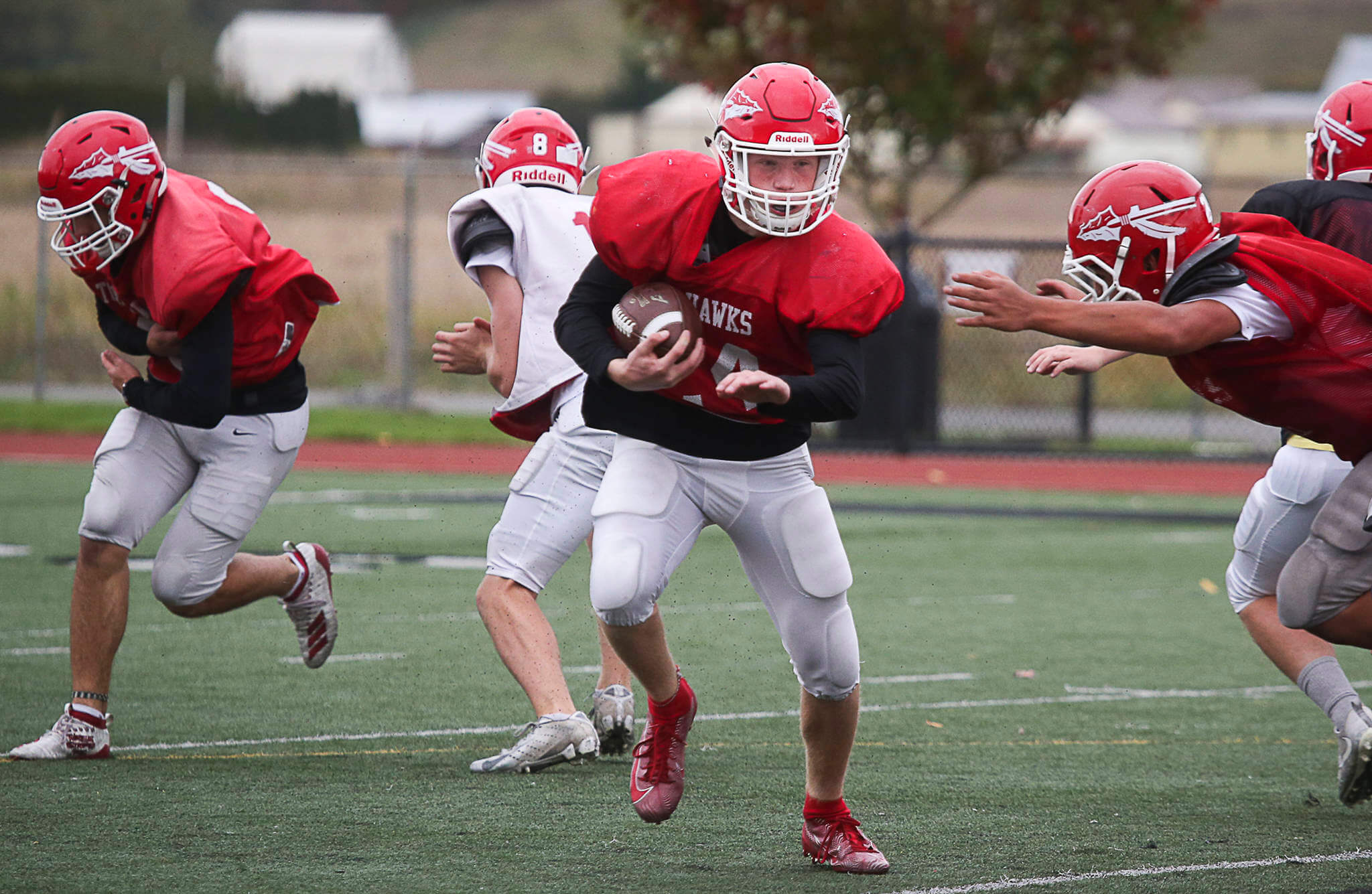
Stretching and Body Positioning
- Pre-Throw Stretching: Always begin with stretching exercises to prevent injuries. This preparation is crucial for maintaining flexibility and performance during the game.
- Optimal Body Stance: Adopt a stance with the pivot foot pointing towards the target and maintain eye contact with the target to ensure better accuracy and control.
Handling and Release Techniques
- Ball Positioning: Hold the ball near the ear to streamline the motion from wind-up to release, ensuring a quick and controlled throw.
- Wind-Back Motion: Execute the wind-back in a circular arc, which helps in building momentum. Release the ball using the fingertips to enhance spin and accuracy.
Practice Regimens
- Consistent Practice: Regular practice is essential for improving both accuracy and throwing distance. It is recommended to integrate varied throwing drills into regular training sessions.
Use of Grip Enhancing Products
- Grip Boost Labs Products: Consider using products from Grip Boost Labs, such as football gloves and grip-boosting gels. These are designed to enhance grip performance significantly.
Advanced Grip Techniques
- Rainbow Flick Technique: This technique involves three movements: lifting the ball from the floor, flicking it up high, and rolling it up the back of the leg. Practice this by positioning the heel of the weaker foot inside the stronger foot at a 90-degree angle, focusing on lifting and flicking the ball accurately. Body movement plays a crucial role in controlling the direction of the ball.
Conclusion
Throughout this article, we have explored the essential techniques for holding and managing a football, providing both beginners and seasoned players with a comprehensive guide to improve their game. From the basics of gripping the football for running and throwing to advanced methods designed to enhance performance, the strategies outlined are aimed at fostering consistency, accuracy, and confidence on the field. The detailed steps and corrections for common mistakes serve as a valuable resource for players seeking to refine their skills and avoid common pitfalls that can hinder performance.
The significance of mastering the right grip cannot be overstated, as it forms the foundation of effective play, whether one is aiming for precision in throws or security while running. By incorporating these techniques into regular practice, players can significantly elevate their game, ensuring they are well-prepared to face the challenges of competitive play.
The journey to mastering football handling is ongoing, and as such, players are encouraged to continuously assess and adjust their techniques. Emphasizing the importance of perseverance and practice, this guide stands as a stepping stone towards achieving excellence in the demanding and rewarding sport of football.
FAQs
Q: What is the correct way to grip a football?
A: To grip a football properly, place your dominant hand on the laces, with your fingers spread across them. Your thumb should be positioned on the opposite side of the laces, ensuring a firm and balanced hold.
Q: Can you describe the step-by-step process to throw a football?
A: Throwing a football involves several steps: Start by gripping the football correctly. Position your feet shoulder-width apart, pointing towards your target. Pull the football back next to your head, then move forward in a smooth motion, releasing the ball as you point towards your target. Finally, follow through with your throwing arm to ensure accuracy and power.
Q: What is a suitable way for children to hold a football?
A: Children should hold a football in a similar manner to adults but may need a smaller ball to accommodate their hand size. Teach them to place their fingers on the laces and their thumb on the opposite side for a stable grip.
Q: How should you grip and pass a football effectively?
A: To grip and pass a football effectively, start by ensuring a proper grip with your fingers on the laces. Step forward with your opposite foot, aim at your target, and pass the ball in a swift, forward motion while maintaining your focus on the target. Follow through with your hand ending towards the target to increase pass accuracy.




